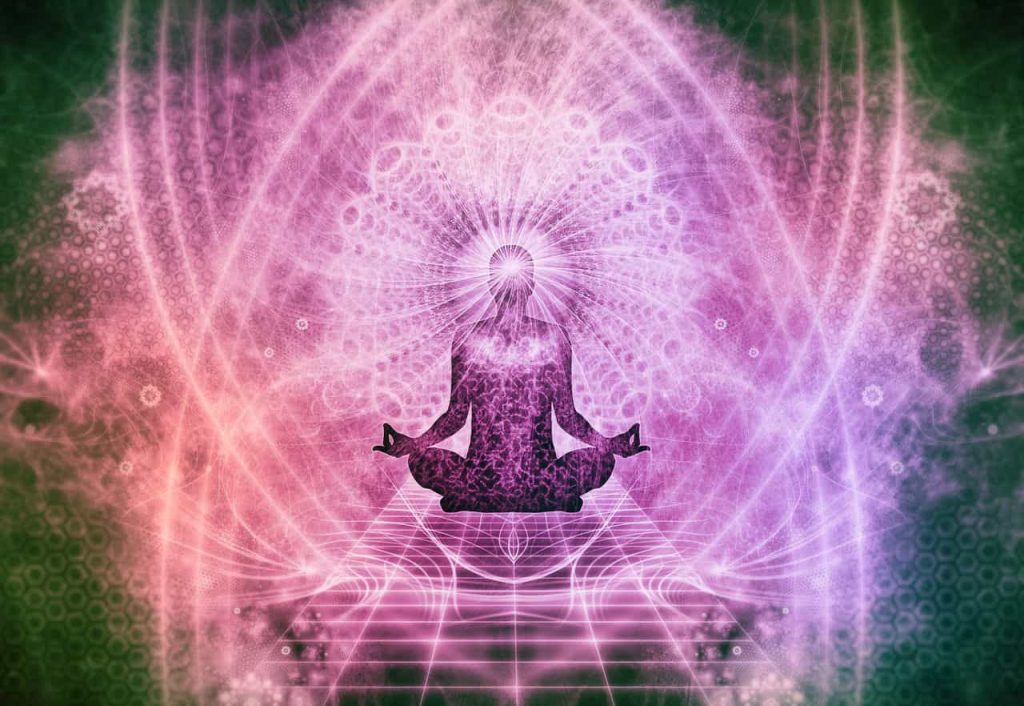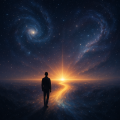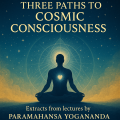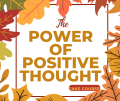
As an awakened and enlightened spiritual teacher, I invite you on a sacred journey: to see life not as a series of random events, but as a living, breathing testament to the Divine within and around you. Across every tradition — from Christianity to Buddhism, Hinduism to African spirituality, Judaism to Taoism — a single truth echoes: Everything is spiritual.
The Subtle Whispers Beyond the Ordinary
Many people move through life as if caught in an endless cycle of duty: waking, working, sleeping. Yet every now and then, a sunset stuns us into silence, a child’s laughter fills us with joy, or a sudden kindness stirs a deep, wordless longing. These moments are not accidents. They are glimpses through the veil.
Christian mystics speak of “thin places,” where heaven and earth seem to meet. In African spirituality, the ancestors whisper through the wind and rivers. Buddhist teachings remind us that every moment holds the potential for awakening. When we begin to see these moments, life ceases to be mundane. Life becomes holy.
The Invisible Threads Holding Creation Together
From ancient Genesis stories describing God breathing life into dust, to Hindu teachings of Brahman weaving the world with sacred threads, traditions worldwide agree: creation is no accident.
Modern science supports this awe. Physicists tell us that if gravity had been a fraction weaker, or oxygen slightly different, life would not exist. In quantum physics, quarks dance across space and time, instantaneously connected. Everything, from the spinning of galaxies to the fluttering of a butterfly’s wings, is woven together in an intricate, intelligent tapestry.
This echoes the Bahá’í teaching that all creation is one interconnected whole, unfolding with divine purpose.
Time, Space, and the Sacred Now
We rush, we plan, we regret, we worry. Yet ancient traditions urge us to return to the present moment.
“Be still and know that I am God,” whispers the Psalmist.
“Chop wood, carry water,” say the Zen monks, teaching that enlightenment is found in the simplicity of now.
Time, modern science reveals, is not fixed. Einstein showed us that it bends and warps. In the eternal now, past and future dissolve. Every breath we take, every flower we notice, every genuine smile — becomes a portal to the Infinite.
The Dance of Dust and Spirit
Human beings stand at a unique crossroads: formed from dust, but animated by Divine breath.
In Judaism, the story of Adam speaks of being formed from earth and filled with the breath of life. In African wisdom, humans are seen as the bridge between the ancestors (the spirit world) and the earth.
We are not just biological machines. Every thought, every gesture, every act of kindness, even washing dishes or tending a garden, carries profound spiritual weight when done with awareness.

Rediscovering the Sacred Rhythm: Work, Rest, and Celebration
The ancients understood a rhythm that modern society has forgotten: create, then rest.
After six days of creation, even God rested. In Judaism, Sabbath is a sacred pause. In Hinduism, the day of silence (Mauna) allows seekers to reconnect with their source. African cultures celebrate harvest festivals — not merely for the food, but to honor the abundance of life.
Rest is not laziness. Rest is reverence. It reminds us: we are more than our productivity. We are divine beings, meant to create, celebrate, and be in awe.
Cosmic Grandeur and Quantum Mysteries
Look up at the night sky. Scientists estimate 100 billion galaxies, each with countless stars. Look down into the quantum world: particles blink in and out of existence, defying human logic.
Both extremes — the vast and the minute — speak the same truth found in the Taoist way: the One is found in the Many, and the Many in the One.
Life is not chaos. It is symphony.
A Mindset Shift: Seeing the Sacred in Everything
In the Bahá’í Faith, believers are taught to “see no stranger,” to find kinship with all creation. Buddhism teaches that even a single drop of water is worthy of reverence.
Imagine if you lived as if every moment was a temple. Preparing a meal could become a prayer. Listening to a friend could become an act of worship. Folding laundry could be a meditation on the miracle of existence.
This is not fantasy. This is the life the great Masters — Jesus, Buddha, Krishna, Lao Tzu — pointed toward.
Awakening to the Spiritual Vision
All life is sacred.
From the grand galaxies to the subatomic particles dancing in your cells, from your first breath in the morning to your last thought at night, you are living in a cathedral of wonder.
The ancient Hermetic prayer says:
“Holy are You who surpass every excellence. Holy are You whose counsel is done by Your own powers. Holy are You, Father of All.”
You are invited — here, now — to awaken.
Pause. Breathe. Look around.
You are not alone. You are not random. You are part of the great unfolding. You are sacred.

Frequently Asked Questions on the Sacredness of Everything
1. What is the central idea being presented in this text?
The core message is that everything in existence is fundamentally spiritual and interconnected. This perspective encourages seeing beyond the mundane and recognizing the inherent sacredness in every aspect of life, from the grand cosmos to the smallest daily activities and interactions. It posits that a divine presence or intelligence permeates all of creation, echoing across various spiritual traditions and even hinted at by modern science.
2. How do everyday moments relate to the spiritual realm, according to the text?
The text suggests that seemingly ordinary moments – like witnessing a beautiful sunset, hearing a child’s laughter, or experiencing an act of kindness – are not random occurrences but rather “glimpses through the veil.” These moments can be understood as “thin places” where the spiritual and material worlds intersect. Different traditions offer similar ideas, such as ancestors communicating through nature or the Buddhist concept of every moment holding the potential for awakening, transforming the mundane into the holy.
3. How do different spiritual traditions and even science support the idea of interconnectedness and a purposeful creation?
The text highlights that diverse spiritual traditions, from creation stories in Genesis to the Hindu concept of Brahman weaving the world, emphasize that creation is not accidental. Modern science, through fields like physics, provides supporting perspectives. For instance, the precise calibration of physical constants necessary for life and the interconnectedness of quantum particles suggest an underlying order and interconnectedness. This aligns with teachings like the Bahá’í belief in the oneness of all creation unfolding with divine purpose.
4. Why is the present moment emphasized, and how does it connect to the spiritual?
The text argues that our preoccupation with the past and future distracts us from the inherent spirituality of the present. Ancient traditions, exemplified by the Psalmist’s call to “be still and know that I am God” and Zen monks’ emphasis on finding enlightenment in simple tasks, urge a return to the now. Modern science’s understanding of time as fluid further supports this, suggesting that in the “eternal now,” we can access a deeper reality. Each mindful breath and genuine experience becomes a “portal to the Infinite.”
5. What is humanity’s unique role in this spiritual understanding of the world?
Humans are presented as being at a unique intersection of the physical and spiritual, formed from “dust” yet animated by “Divine breath.” Various traditions, such as the Jewish story of Adam and African wisdom viewing humans as bridges between the spirit world and earth, underscore this dual nature. The text emphasizes that our actions, thoughts, and even mundane tasks carried out with awareness have profound spiritual significance, transcending a purely mechanistic view of human existence.
6. How does the concept of rhythm, particularly regarding work and rest, relate to spirituality?
The text points out that ancient societies understood a natural rhythm of creation and rest, a balance often forgotten in modern life. The example of God resting after creation, the Jewish Sabbath, and Hindu days of silence are presented as sacred pauses for reconnecting with one’s source and honoring the abundance of life. Rest is framed not as idleness but as an act of reverence, reminding us of our divine nature beyond mere productivity.
7. How do the vastness of the cosmos and the intricacies of the quantum world contribute to this spiritual perspective?
Both the immense scale of the universe, with its billions of galaxies, and the mind-boggling nature of the quantum realm, where particles appear and disappear, point towards a reality beyond human comprehension and logic. This resonates with spiritual ideas, such as the Taoist concept of the One existing in the Many and the Many in the One, suggesting an underlying unity and intelligence orchestrating the apparent complexity of existence. Life, in this view, is not random but a harmonious “symphony.”
8. What does it mean to adopt a “mindset shift” to see the sacred in everything, and what are the potential benefits?
Adopting a mindset shift involves intentionally perceiving every moment and every aspect of life as imbued with sacredness. This could mean transforming everyday activities, like preparing a meal or listening to a friend, into acts of devotion or meditation. Drawing inspiration from the teachings of spiritual masters who emphasized reverence for all of creation, this shift aims to awaken us to the inherent wonder and interconnectedness of existence. The potential benefit is a life lived with greater awareness, purpose, and a profound sense of being part of a larger, sacred unfolding.



















0 responses on "Everything is Spiritual: Awakening to the Sacredness of Every Breath"